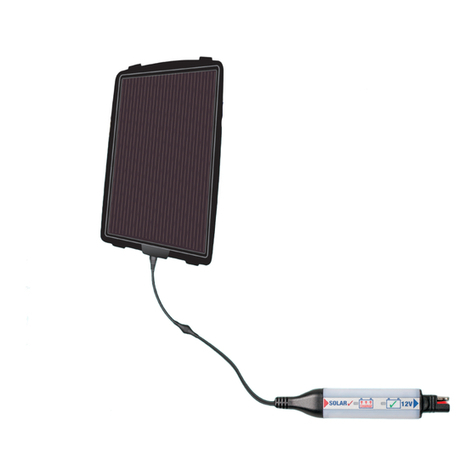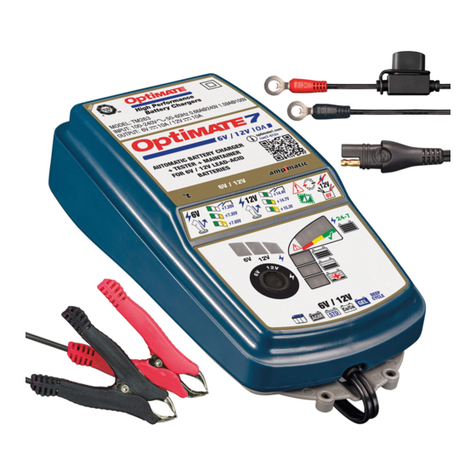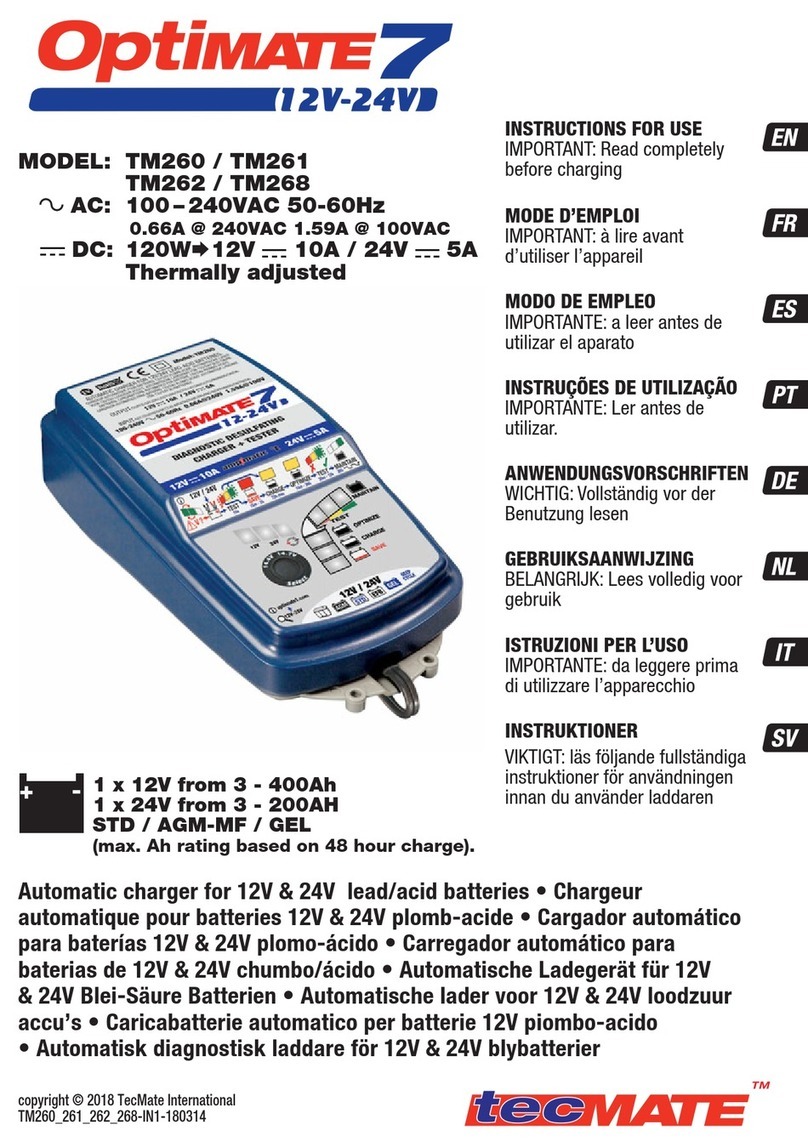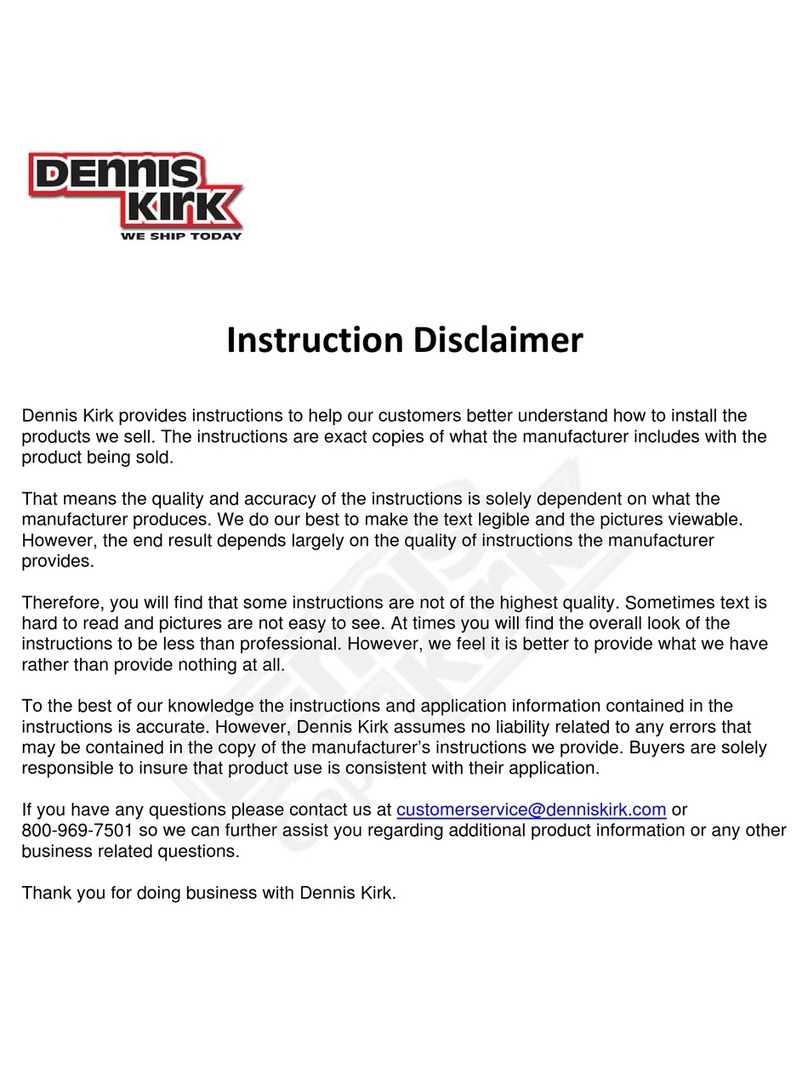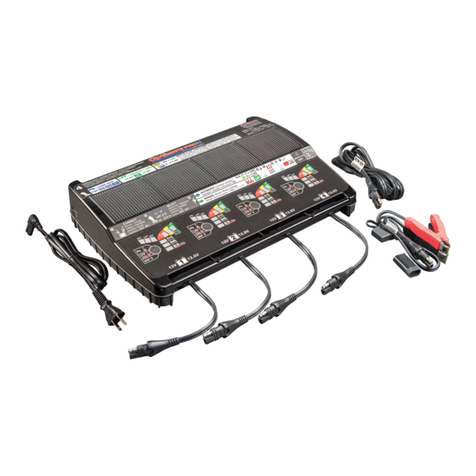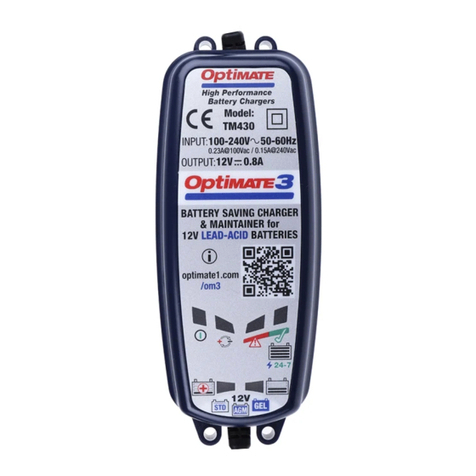5
AUTOMATIC DIAGNOSTIC CHARGER FOR 12.8V & 16V LiFePO4(LITHIUM IRON
PHOSPHATE ) BATTERIES UP TO 200AH:
SAFETY WARNING AND NOTES: IF YOU HAVE NOT YET DONE SO, READ THE
PRECEDING PAGES LABELLED "IMPORTANT SAFETY INSTRUCTIONS" BEFORE
OPERATING THIS CHARGER.
This appliance can be used by children aged from 8 years and above and persons with reduced
physical,sensory or mental capabilities or lack of experience and knowledge if they have been given
supervision or instruction concerning use of the appliance in a safe way and understand the hazards
involved. Children shall not play with the appliance. Cleaning and user maintenance shall not be made
by children without supervision.
CORRECT USE:
Use the charger only if the input and output leads and connectors are in good, undamaged condition. If the input
cable is damaged, it is essential to have it replaced without delay by the manufacturer, his authorised service
agent or a qualified workshop, to avoid danger. Protect your charger from damp and humid conditions both during use and
in storage. Damage resulting from corrosion, oxidation or internal electrical short-circuiting is not covered by warranty. Distance the
charger from the battery during charging to avoid contamination by or exposure to acid or acidic vapours. If using it in the horizontal
orientation, place the charger on a hard, flat surface, but NOT on plastic, textile or leather. Use the fixing holes provided in the
enclosure base to attach the charger to any convenient, sound vertical surface.
EXPOSURE TO LIQUIDS: This charger is designed to withstand exposure to liquids accidentally spilled or splashed onto the
casing from above, or to light rainfall. Prolonged exposure to falling rain is inadvisable and longer service life will be obtained by
minimizing such exposure.Failure of the charger due to oxidation resulting from the eventual penetration of liquid into the electronic
components, connectors or plugs,is not covered by warranty.
VERY FLAT NEGLECTED BATTERIES: Pay particularly close attention to the following A LiFePO4 battery
left deep-discharged for an extended period may develop permanent damage in one or more cells.
Such batteries may heat up excessively during charging. During the SAVE mode the program limits charge current
if the voltage is below nomimal (12.8V / 16V) and the program should detect obvious cell damage and will automatically suspend
charging, but the higher the cell count in parallel the more difficult it is to detect a bad cell e.g. a 5Ah battery typically has 4 series
connected sets of 2 parallel cells (4S2P configuration - total 8 cells), a 10Ah battery has 4 series connected sets of 4 parallel cells
(4S4P configuration - total 16 cells).
ALWAYS monitor the battery temperature during the first hour, then hourly there-after. If at any
time the battery is uncomfortably hot to touch or you notice any unusual signs, DISCONNECT THE
CHARGER IMMEDIATELY.
CONNECTING THE CHARGER TO THE BATTERY
1. Disconnect AC power supply before making or breaking DC / battery connections.
2. If charging a battery in the vehicle with the battery clips, before making connections, first check that the battery clips can be
safely and securely positioned clear from surrounding wiring, metal tubing or the chassis. Make connections in the following
order: First connect to the battery terminal not connected to the chassis (normally positive), then
connect the other battery clip (normally negative) to the chassis well away from the battery and
fuel line. Always disconnect in reverse sequence.
3. When charging a battery out of the vehicle with the battery clips, place it in a well ventilated area. Connect the charger to the
battery: RED clamp to POSITIVE (POS, P or +) terminal and BLACK clamp to NEGATIVE (NEG, N or –) terminal. Make sure the
connections are firm and secure. Good contact is important.
PROCEEDING TO CHARGE
CHARGING TIME
Charge time will be affected by ambient temperature. The safeTº program limits charge current if the temperature measured at the
OptiMate Lithium is below 0ºC / 32ºF or above 45ºC / 113ºF. Within the normal temperature range the ampmatic™ LiFePO4specific
program automatically determines the most efficient rate of charge current for the connected battery, according to its state of charge,
state of health, and electrical storage (Ah) capacity. The delivered current may be anywhere from 1.25A to 9.5A.
Charge time on a flat but otherwise undamaged battery:
For batteries rated from 2.5Ah to 10Ah: 60 to 120 minutes to progress to the voltage retention test.
For batteries rated above 10Ah: approximately 10% of the battery’s Ah rating, so a 50Ah battery should take no more than about
5 hours to progress to the voltage retention test.
Deep discharged batteries may take longer.
SAFETY

